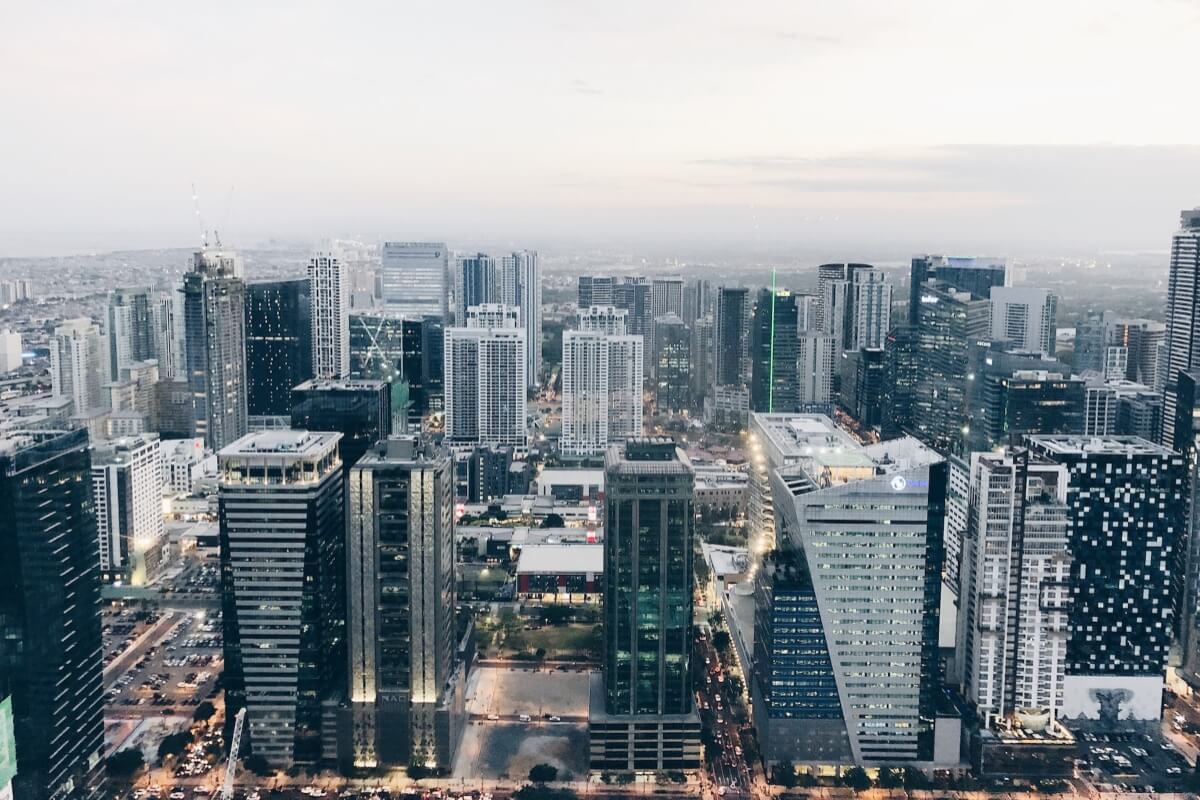Economy, followed by industry (including manufacturing, construction, and mining), and agriculture. The country has seen steady growth over the past few years. However, it still faces challenges such as high poverty and inequality, infrastructure development, and corruption. The government has been implementing various reforms to address these issues and attract more foreign investment.
Photo by OJ Serrano on Unsplash
Economy
Related Post: The Philippines-Culture Part 4
Table of Contents
Economies
An economy is the system of production, distribution, exchange, and consumption of goods and services in a society. There are various types of economies, including:
- Capitalism – characterized by private ownership and free markets.
- Socialism – is characterized by government control and ownership of the means of production.
- Mixed economy – a blend of capitalist and socialist principles.
- Command economy – characterized by a central authority directing all economic activity.
- Market economy – characterized by supply and demand determining prices.
The performance of an economy often measured by its gross domestic product (GDP), unemployment rate, inflation rate, and trade balance. The health of an economy can also influenced by factors such as government policies, natural disasters, and global events.
a. Science and technology
The Philippine science and technology sector has made significant progress in recent years. The government has made a strong push towards science, technology, engineering, and mathematics (STEM) education and research. Major initiatives include the establishment of the Department of Science and Technology. The creation of science and technology parks, and increased funding for research and development. The private sector has also been active in investing in and promoting technological advancements. Particularly in the fields of information and communication technology, electronics, and biotechnology. Despite these efforts, the Philippines still faces challenges in developing its science and technology sector. Including a shortage of skilled professionals and limited access to funding and resources.
b. Tourism
Tourism is a significant contributor to the Philippine economy, providing employment and income for millions of Filipinos. The country boasts natural attractions such as beaches, islands, and dive sites, as well as historic and cultural landmarks. Making it a popular destination for both local and international travelers. The government has working to promote the country as a tourist destination. Has implemented measures to improve the tourist experience, including the development of infrastructure. Such as airports and tourist facilities, and the implementation of environmental protection policies. Despite the growth of the industry, the Philippine tourism sector has affected by recent events. Such as the COVID-19 pandemic, which has resulted in decreased visitor numbers and a drop in revenue. The government is currently working to bounce back from the impact of the pandemic and to revive the tourism industry.
Infrastructure
The Philippines’ infrastructure has been a priority for the government in recent years. The government has launched several major infrastructure projects, including the construction of new airports, seaports, and highways. As well as the rehabilitation and upgrade of existing infrastructure. Additionally, the government has been working to improve public transportation systems. Including the development of a mass rail system in Metro Manila. In terms of energy, the government is promoting the use of renewable energy sources. Such as solar and wind power, and working to improve the country’s power generation and distribution systems. Despite these efforts, the Philippines still faces challenges in developing its infrastructure. Including limited funding, corruption, and a lack of coordination among government agencies. Nevertheless, the government remains committed to improving the country’s infrastructure. To support economic growth and improve the quality of life for Filipinos.
a. Transportation
Transportation in the Philippines is primarily provided by road, air, and sea. The country’s road network consists of both national highways and local roads, although many areas still lack adequate road infrastructure. The government has been working to improve road connectivity. Especially in rural areas, through the construction of new roads and the upgrading of existing ones. The Philippine air transport system relatively well-developed, with multiple airports serving domestic and international flights.
The country’s sea transport system is also extensive, with numerous ports serving inter-island and international shipping. Public transportation in the Philippines dominated by jeepneys, buses, and taxis, although the government is working. To improve and modernize the system, including the development of a mass rail system in Metro Manila. Despite these efforts, the Philippine transportation sector still faces several challenges, including traffic congestion, poor road safety. And a lack of affordable and accessible public transportation, especially in rural areas.
b. Water supply and sanitation
Water supply and sanitation in the Philippines are a concern for the government and the general public. Despite the availability of numerous water sources. Such as rivers, lakes, and groundwater, access to safe and reliable water supply remains limited, particularly in rural areas. The government has been working to improve water supply and sanitation services, including the construction of new water treatment plants. The rehabilitation of existing facilities, and the expansion of water distribution networks. However, the sector still faces several challenges, including insufficient investment, aging infrastructure, and water loss due to leakages and theft. Sanitation is also a concern, with many communities still lacking access to proper toilet facilities and sewage treatment plants. The government working to address these issues by improving the quality of services. And expanding access to water and sanitation services, especially in rural areas.


